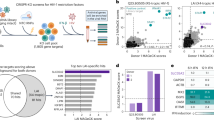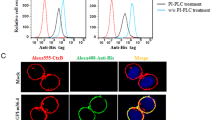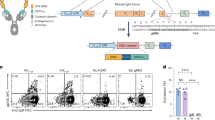Abstract
The envelope glycoprotein complex (Env) of human immunodeficiency virus-1 (HIV-1) can induce apoptosis by a cornucopia of distinct mechanisms. A soluble Env derivative, gp120, can kill cells through signals that are transmitted by chemokine receptors such as CXCR4. Cell surface-bound Env (gp120/gp41), as present on the plasma membrane of HIV-1-infected cells, can kill uninfected bystander cells expressing CD4 and CXCR4 (or similar chemokine receptors, depending on the Env variant) by at least three different mechanisms. First, a transient interaction involving the exchange of lipids between the two interacting cells (‘the kiss of death’) may lead to the selective death of single CD4-expressing target cells. Second, fusion of the interacting cells may lead to the formation of syncytia which then succumb to apoptosis in a complex pathway involving the activation of several kinases (cyclin-dependent kinase-1, Cdk1; checkpoint kinase-2, Chk2; mammalian target of rapamycin, mTOR; p38 mitogen-activated protein kinase, p38 MAPK; inhibitor of NF-κB kinase, IKK), as well as the activation of several transcription factors (NF-κB, p53), finally resulting in the activation of the mitochondrial pathway of apoptosis. Third, if the Env-expressing cell is at an early stage of imminent apoptosis, its fusion with a CD4-expressing target cell can precipitate the death of both cells, through a process that may be considered as contagious apoptosis and which does not involve Cdk1, mTOR, p38 nor p53, yet does involve mitochondria. Activation of some of the above- mentioned lethal signal transducers have been detected in patients’ tissues, suggesting that HIV-1 may indeed trigger apoptosis through molecules whose implication in Env-induced killing has initially been discovered in vitro.
Similar content being viewed by others
Log in or create a free account to read this content
Gain free access to this article, as well as selected content from this journal and more on nature.com
or
Abbreviations
- AIDS:
-
acquired immunodeficiency syndrome
- Cdk1:
-
cyclin-dependent kinase-1
- Cyt c:
-
cytochrome c
- Env:
-
envelope glycoprotein complex
- HIV-1:
-
human immunodeficiency virus-1
- mTOR:
-
mammalian target of rapamycin
- p38T180/Y182P:
-
p38 with phosphorylated threonine 180 and tyrosine 182
- p53S15P:
-
p53 with phosphorylated serine 15
- p53S46P:
-
p53 with phosphorylated serine 46
- siRNA:
-
small interfering RNA
- Z-VAD.fmk:
-
N-benzyloxycarbonyl-Val-Ala-Asp-fluoromethylketone
References
Badley AD, Pilon AA, Landay A and Lynch DH (2000) Mechanisms of HIV-associated lymphocyte apoptosis. Blood 96: 2951–2964
Gougeon M (2003) Cell death and immunity: apoptosis as an HIV strategy to escape immune attack. Nat Rev Immunol 3: 392–404
Pantaleo G and Fauci A (1995) Apoptosis in HIV infection. Nat. Med. 1: 118–120
Fauci AS (1996) Host factors and the pathogenesis of HIV-induced disease. Nature 384: 529–534
Cohen I, Boya P, Zhao L, Metivier D, Andreau K, Perfettini J-L, Weaver JG, Badley A, Taylor EW and Kroemer G (2004) Anti-apoptotic activity of the glutathione peroxidase homologue encoded by HIV-1. Apoptosis 9: 181–192
Zhao L, Cox AG, Ruziecka JA, Blat AA, Zhang W and Taylor EW (2000) Molecular modeling and in vitro activity of an HIV-1-encoded glutathione peroxidase. Proc. Natl. Acad. Sci. USA 97: 6356–6361
Somasundaran M, Sharkey M, Brichacek B, Luzuriaga K, Emerman M, Sullivan JL and Stevenson M (2002) Evidence for a cytopathogenicity determinant in HIV-1 Vpr. Proc. Natl. Acad. Sci. USA 99: 9503–9508
Lum JJ, Cohen OJ, Nie Z, Weaver JG, Gomez TS, Yao XJ, Lynch D, Pilon AA, Hawley N, Kim JE, Chen Z, Montpetit M, Sanchez-Dardon J, Cohen EA and Badley AD (2003) Vpr R77Q is associated with long-term nonprogressive HIV infection and impaired induction of apoptosis. J. Clin. Invest. 111: 1547–1554
Brenner C and Kroemer G (2003) The mitochondriotoxic domain of Vpr determines HIV-1 virulence. J. Clin. Invest. (in press)
Jacotot E, Ravagnan L, Loeffler M, Ferri KF, Vieira HL, Zamzami N, Costantini P, Druillennec S, Hoebeke J, Briand JP, Irinopoulou T, Daugas E, Susin SA, Cointe D, Xie ZH, Reed JC, Roques BP and Kroemer G (2000) The HIV-1 viral protein R induces apoptosis via a direct effect on the mitochondrial permeability transition pore. J. Exp. Med. 191: 33–46
Yao XJ, Mouland AJ, Subbramanian RA, Forget J, Rougeau N, Bergeron D and Cohen EA (1998) Vpr stimulates viral expression and induces cell killing in human immunodeficiency virus type 1-infected dividing Jurkat T cells. J. Virol. 72: 4686–4693
Cicala C, Arthos J, Rubbert A, Selig S, Wildt K, Cohen OJ and Fauci AS (2000) HIV-1 envelope induces activation of caspase-3 and cleavage of focal adhesion kinase in primary human CD4+ T cells. Proc. Natl. Acad. Sci. USA 97: 1178–1183
Laurent Crawford AG, Krust B, Riviere Y, Desgranges C, Muller S, Kieny MP, Dauguet C and Hovanessian AG (1993) Membrane expression of HIV envelope glycoproteins triggers apoptosis in CD4 cells. AIDS Res Hum Retroviruses 9: 761–773
Lifson JD, Feinberg MB, Reyes GR, Rabin L, Bonapour B, Chakrabarti S, Moss B, Wong-Staal F, Steimer KS and Engleman EG (1986a) Induction of CD4-dependent cell fusion by the HTLV-III/LAV envelope glycoprotein. Nature 323: 725–728
Sodroski JG, Goh WC, Rosen A, Campbell K and Haseltine WA (1986) Role of the HTLV/LAV envelope in syncytia formation and cytopathicity. Nature 322: 470–474
Roggero R, Robert-Hebmann V, Harrington S, Roland J, Verne L, Jaleco S, Devaux C and Biard-Piechaczyk M (2001) Binding of human immunodeficiency virus type 1 gp120 to CXCR4 induces mitochondrial transmembrane depolarization and cytochrome c-mediated apoptosis independently of Fas signaling. J. Virol. 75: 7637–7650
Twu C, Liu NQ, Popik W, Bukrinsky M, Sayre J, Roberts J, Rania S, Bramhandam V, Roos KP, MacLellan WR and Fiala M (2002) Cardiomyocytes undergo apoptosis in human immunodeficiency virus cardiomyopathy through mitochondrion- and death receptor-controlled pathways. Proc. Natl. Acad. Sci. USA 99: 14386–14391
Klasse PJ and Moore JP (2004) Is there enough gp120 in the body fluids of HIV-1-infected individuals to have biologically significant effects? Virology 2004: 1–8
Blanco J, Barretina J, Ferri KF, Jacotot E, Gutierrez A, Cabrera C, Kroemer G, Clotet B and Este JA (2003) Cell-surface-expressed HIV-1 envelope induces the death of CD4 T cells during GP41-mediated hemifusion-like events. Virology 305: 318–329
Sylwester A, Murphy S, Shutt D and Soll DR (1997) HIV-induced T cell syncytia are self-perpetuating ant the primary cause of T cell death in culture. J. Immunol. 158: 3996–4007
Ferri KF, Jacotot E, Geuskens M and Kroemer G (2000b) Apoptosis and karyogamy in syncytia induced by HIV-1-ENV/CD4 interaction. Cell Death Differ. 7: 1137–1139
Zhivotovsky B and Kroemer G (2004) Apoptosis and genomic instability. Nat. Rev. Mol. Cell. Biol. 5: 752–762
Andreau K, Perfettini J-L, Castedo M, Metivier D, Scott V, Pierron G and Kroemer G (2004b) Contagious apoptosis facilitated by the HIV-1 envelope. Fusion-induced cell-to-cell transmission of a lethal signal. J. Cell. Sci. 117: 5643–5653
Catani MV, Corasaniti MT, Navarra M, Nistico G, Finazzi-Agro A and Melino G (2000) gp120 induces cell death in human neuroblastoma cells through the CXCR4 and CCR5 chemokine receptors. J. Neurochem. 74: 2373–2379
Garden GA, Guo W, Jayadev S, Tun C, Balcaitis S, Choi J, Montine TJ, Moller T and Morrison RS (2004) HIV associated neurodegeneration requires p53 in neurons and microglia. FASEB J. 18: 1141–1143
Hayward P (2004) Viral proteins cause cell death in HIV-associated dementia. Lancet Neurol. 3: 325
Xu Y, Kulkosky J, Acheampong E, Nunnari G, Sullivan J and Pomerantz RJ (2004) HIV-1-mediated apoptosis of neuronal cells: proximal molecular mechanisms of HIV-1-induced encephalopathy. Proc. Natl. Acad. Sci. USA 101: 7070–7075
Barbaro G, Fisher SD and Lipshultz SE (2001) Pathogenesis of HIV-associated cardiovascular complications. Lancet Infect. Dis. 1: 115–124
Kapasi AA, Patel G, Franki N and Singhal PC (2002) HIV-1 gp120-induced tubular epithelial cell apoptosis is mediated through p38-MAPK phosphorylation. Mol. Med. 8: 676–685
Ray PE, Liu XH, Robinson LR, Reid W, Xu L, Owens JW, Jones OD, Denaro F, Davis HG and Bryant JL (2003) A novel HIV-1 transgenic rat model of childhood HIV-1-associated nephropathy. Kidney Int. 63: 2242–2253
Vlahakis SR, Villasis-Keever A, Gomez TS, Bren GD and Paya CV (2003) Human immunodeficiency virus-induced apoptosis of human hepatocytes via CXCR4. J. Infect. Dis. 188: 1455–1460
Berndt C, Möpps B, Angermüller S, Gierschik P and Krammer PH (1998) CXCR4 and CD4 mediate a rapid CD95-independent cell death in CD4+ cells. Proc. Natl. Acad. Sci. USA 95: 12556–12561
Finco O, Nuti S, De Magistris M, Mangiavacchi L, Aiuti A, Forte P, Fantoni A, van der Putten H and Abrignani S (1997) Induction of CD4+ T cell depletion in mice doubly transgenic for HIV gp120 and human CD4. Eur. J. Immunol. 27: 1319–1324
Hashimoto F, Oyaizu N, Kalyanaraman VS and Pahwa S (1997) Modulation of Bcl-2 protein by CD4 cross-linking: a possible mechanism for lymphocyte apoptosis in human immunodeficiency virus infection and for rescue of apoptosis by interleukin-2. Blood 1997: 745–753
Somma F, Tuosto L, Montani MS, Di Somma MM, Cundari E and Piccolella E (2000) Engagement of CD4 before TCR triggering regulates both Bax- and Fas (CD95)-mediated apoptosis. J. Immunol. 164: 5078–5087
Tuosto L, Marinari A and Piccolella E (2002) CD4-Lck through TCR and in the absence of Vav exchange factor induces Bax increase and mitochondrial damage. J. Immunol. 168: 6106–6112
Tuosto L, Piazza C, Moretti S, Modesti A, Greenlaw R, Lombardi G and Piccolella E (1995) Ligation of either CD2 or CD28 rescues CD4+ T cells from HIV-gp120-induced apoptosis. Eur. J. Immunol. 25: 2917–2922
Kaul M and Lipton SA (1999) Chemokines and activated macrophages in HIV gp120-induced neuronal apoptosis. Proc. Natl. Acad. Sci. USA 96: 8212–8216
Haughey NJ and Mattson MP (2002) Calcium dysregulation and neuronal apoptosis by the HIV-1 Proteins Tat and gp120. J. Acquir. Immune. Defic. Syndr. 31 (Suppl 2): S55–S61
Garden GA, Budd SL, Tsai E, Hanson L, Kaul M, D'Emilia DM, Friedlander RM, Yuan J, Masliah E and Lipton SA (2002) Caspase cascades in human immunodeficiency virus-associated neurodegeneration. J. Neurosci. 22: 4015–4024
Silva C, Zhang K, Tsutsui S, Holden JK, Gill MJ and Power C (2003) Growth hormone prevents human immunodeficiency virus-induced neuronal p53 expression. Ann. Neurol. 54: 605–614
Jordan-Sciutto KL, Wang G, Murphy-Corb M and Wiley CA (2000) Induction of cell-cycle regulators in simian immunodeficiency virus encephalitis. Am. J. Pathol. 157: 497–507
Blanco J, Barretina J, Clotet B and Este JA (2004) R5 HIV gp120-mediated cellular contacts induce the death of single CCR5-expressing CD4 T cells by a gp41-dependent mechanism. J. Leukocyte Biol. 76: 804–811
Blanco J, Jacotot E, Cabrera C, Cardona A, Clotet B, De Clercq E and Este JA (1999) The implication of the chemokine receptor CXCR4 in HIV-1 envelope protein-induced apoptosis is independent of the G protein-mediated signalling. AIDS 13: 909–917
Ferri KF, Jacotot E, Blanco J, Esté JA, Zamzami A, Susin SA, Brothers G, Reed JC, Penninger JM and Kroemer G (2000a) Apoptosis control in syncytia induced by the HIV-1-envelope glycoprotein complex. Role of mitochondria and caspases. J. Exp. Med. 192: 1081–1092
Kolesnitchenko V, Wahl LM, Tian H, Sunila I, Tani Y, Hartmann D-P, Cossman J, Raffeld M, Orenstein J, Samelson LE and Cohen DI (1995) Human immunodeficiency virus 1 envelope-initiated G2-phase programmed cell death. Proc. Natl. Acad. Sci. USA 92: 11889–11893
Blaak H, van't Wout AB, Brouwer M, Hoolbrink B, Hovenkamp E and Schuitemaker H (2000) In vivo HIV-1 infection of CD45RA+ CD4+ T cells is established primarily by syncytium-inducing variants and correlates with the rate of CD4+ T cell decline. Proc. Natl. Acad. Sci. USA 97: 1269–1274
Lifson JD, Reyes GR, McGrath MS, Stein BS and Engleman EG (1986b) AIDS retrovirus-induced cytopathology: giant cell formation and involvement of CD4 antigen. Science 232: 1123–1127
Maas JJ, Gange SJ, Schuitemaker G, Coutinho RA, van Leeuwen R and Margolick JB (2000) Strong association between failure of T cell homeostasis and the syncytium-inducing phenotype among HIV-1-infected men in the Amsterdam Cohort Study. AIDS 16: 1155–1161
Mohri H, Perelson AS, Tung K, Ribeiro RM, Ramratnam B, Markowitz M, Kost R, Hurley A, Weinberger L, Cesar D, Hellerstein MK and Ho DD (2001) Increased turnover of T lymphocytes in HIV-1 infection and its reduction by antiretroviral therapy. J. Exp. Med. 194: 1277–1287
Scheller C and Jassoy C (2001) Syncytium formation amplifies apoptotic signals: a new view on apoptosis in HIV infection in vitro. Virology 30: 48–55
Camerini D, Su HP, Gamez-Torre G, Johnson ML, Zack JA and Chen IS (2000) Human immunodeficiency virus type 1 pathogenesis in SCID-hu mice correlates with syncytium-inducing phenotype and viral replication. J. Virol. 74: 3196–3204
Etemad-Moghadam B, Sun Y, Nicholson EK, Fernandes M, Liou K, Gomila R, Lee J and Sodroski J (2000) Envelope glycoprotein determinants of increased fusogenicity in a pathogenic simian-human immunodeficiency virus (SHIV-KB9) passaged in vivo. J. Virol. 74: 4433–4440
Castedo M and Kroemer G (2002) The beauty of death. Trends Cell Biol. 12: 446–447
Castedo M, Ferri KF, Blanco J, Roumier T, Larochette N, Barretina J, Amendola A, Nardacci R, Metivier D, Este JA, Piacentini M and Kroemer G (2001) Human immunodeficiency virus 1 envelope glycoprotein complex-induced apoptosis involves mammalian target of rapamycin/FKBP12-rapamycin-associated protein-mediated p53 phosphorylation. J. Exp. Med. 194: 1097–1110
Boya P, Roumier T, Andreau K, Gonzalez-Polo R-A, Zamzami N, Castedo M and Kroemer G (2003) Mitochondrion-targeted apoptosis regulators of viral origin. Biochem. Biophys. Res. Commun. 304: 575–581
Castedo M, Perfettini J-L, Medema JP and Kroemer G (2004a) Cell death by mitotic catastrophe: a molecular definition. Oncogene 23: 2825–2837
Castedo M, Perfettini J-L, Roumier T, Valent A, Raslova H, Yakushijin K, Horne DA, Feunteun J, Lenoir G, Vainchenker W and Kroemer G (2004b) Mitotic catastrophe. A special case of apoptosis preventing aneuploidy. Oncogene 23: 4362–4370
Castedo M, Perfettini J-L, Roumier T, Yakushijin K, Horne DA, Medema R and Kroemer G (2004c) Chk2 is a negative regulator of mitotic catastrophe. Oncogene 23: 4353–4361
Roumier T, Castedo M, Perfettini J-L, Andreau K, Metivier D, Zamzami N and Kroemer G (2003) Mitochondrion-dependent caspase activation induced by the HIV-1 envelope. Biochem. Pharmacol. 66: 1321–1329
Perfettini J-L, Roumier T, Castedo M, Larochette N, Boya P, Reynal B, Lazar V, Ciccosanti F, Nardacci R, Penninger J, Piacentini M and Kroemer G (2004b) NF-kB and p53 are the dominant apoptosis-inducing transcription factors elicited by the HIV-1 envelope. J Exp Med 199: 629–640
Castedo M, Roumier T, Blanco J, Ferri KF, Barretina J, Tintignac LA, Andreau K, Perfettini J-L, Armendola A, Nardacci R, LeDuc P, Ingber DE, Druillennec S, Roques B, Leibovitch SA, Vilella-Bach M, Chen J, Este JA, Modjtahedi N, Piacentini M and Kroemer G (2002b) Sequential involvement of Cdk1, mTOR and p53 in apoptosis induced by the human immunodeficiency virus-1 envelope. EMBO J. 21: 4070–4080
Ferri KF, Jacotot E, LeDuc P, Geuskens M, Ingber DE and Kroemer G (2000c) Apoptosis of syncytia induced by HIV-1-envelope glycoprotein complex. Influence of cell shape and size. Exp. Cell Sci. 261: 119–126
Green DR and Kroemer G (2004) The pathophysiology of mitochondrial cell death. Science 305: 626–629
Castedo M, Perfettini J-L, Roumier T and Kroemer G (2002a) Cyclin-dependent kinase-1: linking apoptosis to cell cycle and mitotic catastrophe. Cell Death Differ. 9: 1287–1293
Perfettini J-L, Castedo M, Nardacci R, Ciccosanti F, Boya P, Roumier T, Larochette N, Piacentini M and Kroemer G (2005) Essential role of p53 phosphorylation by p38 MAPK in apoptosis induction by the HIV-1 envelope. J. Exp. Med. 201: 279–289
Genini D, Sheeter D, Rought S, Zaunders JJ, Susin SA, Kroemer G, Richman DD, Carson DA, Corbeil J and Leoni LM (2001) HIV induced lymphocyte apoptosis by a p53-initiated, mitochondrion-mediated mechanism. FASEB J. 15: 5–6
Petit F, Arnoult D, Lelievre JD, Parseval LM, Hance AJ, Schneider P, Corbeil J, Ameisen JC and Estaquier J (2002) Productive HIV-1 infection of primary CD4+ T cells induces mitochondrial membrane permeabilization leading to caspase-independent cell death. J. Biol. Chem. 277: 1477–1487
Banki K, Hutter E, Gonchoroff NJ and Perl A (1998) Molecular ordering in HIV-induced apoptosis–Oxidative stress, activation of caspases, and cell survival are regulated by transaldolase. J. Biol. Chem. 273: 11944–11953
Muthumani K, Wadsworth SA, Dayes NS, Hwang DS, Choo AV, Abeysinghe HR, Siekierka JJ and Weiner DB (2004) Suppression of HIV-1 viral replication and cellular pathogenesis by a novel p38/JNK kinase inhibitor. AIDS 18: 739–748
Cannavo G, Paiardini M, Galati D, Cervasi B, Montroni M, De Vico G, Guetard D, Bocchino ML, Picerno I, Magnani M, Silvestri G and Piedimonte G (2001) Abnormal intracellular kinetics of cell-cycle-dependent proteins in lymphocytes from patients infected with human immunodeficiency virus: a novel biologic link between immune activation, accelerated T-cell turnover, and high levels of apoptosis. Blood 97: 1756–1764
Piedimonte G, Corsi D, Paiardini M, Cannavo G, Ientile R, Picerno I, Montroni M, Silvestri G and Magnani M (1999) Unscheduled cyclin B expression and p34 cdc2 activation in T lymphocytes from HIV-infected patients. AIDS 13: 1159–1164
Amendola A, Gougeon ML, Poccia F, Bondurand A, Fesus L and Piacentini M (1996) Induction of “tissue” transglutaminase in HIV pathogenesis: Evidence for high rate of apoptosis of CD4+ T lymphocytes and accessory cells in lymphoid tissues. Proc. Natl. Acad. Sci. USA 93: 11057–11062
Andreau K, Castedo M, Perfettini J-L, Roumier T, Pichart E, Souquere S, Vivet S, Larochette N and Kroemer G (2004) Pre-apoptotic chromatin condensation upstream of the mitochondrial checkpoint. J. Biol. Chem. 279: 55937–55945
Acknowledgements
This work has been supported by ANRS, Sidaction, as well as the European Union (Active p53).
Author information
Authors and Affiliations
Corresponding author
Additional information
Edited by RA Knight
Rights and permissions
About this article
Cite this article
Perfettini, JL., Castedo, M., Roumier, T. et al. Mechanisms of apoptosis induction by the HIV-1 envelope. Cell Death Differ 12 (Suppl 1), 916–923 (2005). https://doi.org/10.1038/sj.cdd.4401584
Received:
Accepted:
Published:
Issue date:
DOI: https://doi.org/10.1038/sj.cdd.4401584
Keywords
This article is cited by
-
HIV-1-related factors interact with p53 to influence cellular processes
AIDS Research and Therapy (2023)
-
The Role of p53 in HIV Infection
Current HIV/AIDS Reports (2023)
-
Inhibition of HIV early replication by the p53 and its downstream gene p21
Virology Journal (2018)
-
Reassessment of the capacity of the HIV-1 Env cytoplasmic domain to trigger NF-κB activation
Virology Journal (2018)
-
HIV-infected macrophages and microglia that survive acute infection become viral reservoirs by a mechanism involving Bim
Scientific Reports (2017)



